Anand Lal Shimpi van AnandTech heeft een 12 pagina's tellende review van VIA's nieuwe KT133A chipset online gekegeld. Dit wordt gedaan aan de hand van het Soltek SL-75KAV-X moederbord, dat voorzien is van een VIA 686B southbridge met ATA-100 support. Verder heeft het Soltek moederbord ook de mogelijkheid tot multiplier adjustment.
Zoals onderhand iedereen wel weet biedt de KT133A boven de KT133 de ondersteuning voor een 133MHz FSB (266MHz DDR). Langzamerhand wordt duidelijk dat de 133MHz FSB een flinke performance boost aan de Athlon geeft en dat de snelheidswinst die de AMD760 met DDR geheugen liet zien, voor een erg groot deel te danken was aan de 133MHz FSB en niet aan het DDR SDRAM. Anand heeft hier een theorie over. Aan de Linpack benchmarks die hij heeft laten draaien op de P4 en alle andere processoren die hij bij de hand had, bleek dat de P4 verschrikkelijk goed gebruikt maakt van de grotere bandbreedte van het RDRAM. Dit is vooral duidelijk als er PC600 i.p.v. PC800 RDRAM wordt gebruikt; de Linpack performance van de P4 daalt dan gelijk met zo'n 17%. Ook is te zien dat zelfs met de geheugenbandbreedte van 2,1GB/s op de AMD760 chipset de Athlon nog niet in de buurt komt van de Pentium 4. De Athlon is dan ook eerder gemaakt voor een hoge FSB bandbreedte:
It turns out that the Athlon, surprisingly enough, doesn’t follow the same design theories that were implemented with the Pentium 4. While the Athlon was built around the assumption that it would always have a high bandwidth FSB to feed the processor, it wasn’t designed around the idea of having a large amount of memory bandwidth that it could stream from. This is much like the design of the Pentium III, which although doesn’t have the same benefit of a high bandwidth FSB, it wasn’t designed around the idea of having a large amount of memory bandwidth which is why RDRAM resulted in no real performance benefit on the Pentium III. Chances are that RDRAM would have a similar effect on the Athlon as well.[break]Er blijkt dan ook uit de (vele) benchmarks die Anand uitvoert, dat de VIA KT133A chipset met PC133 SDRAM bijna even snel is als de AMD760 chipset met PC266 DDR SDRAM. De AMD760 gaf 10-15% prestatiewinst vergeleken met de KT133. De KT133A is in geen enkele test meer dan 5% langzamer dan de AMD760. In sommige gamebenchmarks is het verschil zelfs maar 1%! Anand's conclusie is dan ook dat op dit moment de KT133A veel meer waarde voor zijn geld biedt (zeker met de huidige prijzen van DDR SDRAM). Bovendien is de KT133A gebaseerd op een chipset die zich al ruimschoots heeft bewezen.
[/break]If you want AMD 760 class performance without the added costs of migrating to DDR SDRAM, the KT133A is the perfect solution. While DDR SDRAM may have its place later on down the road when applications are more memory bandwidth intensive, or upon the release of the next-generation Athlon core (not Palomino) that is rumored to be much more like the Pentium 4 in terms of its design, it currently doesn’t make sense for the average user.
[...] You saw the performance advantage that a 1GHz Athlon gained by simply lowering its clock multiplier from 10.0x to 7.5x and using the 133MHz FSB support of the KT133A. You can guarantee that an even more aggressive overclock would result in even better performance figures.
[...] It looks like although VIA was late to the game with a DDR SDRAM chipset for the Athlon, they do get the last laugh as the KT133A offers 95 – 100% of the performance of the AMD 760 without the added cost of DDR SDRAM.

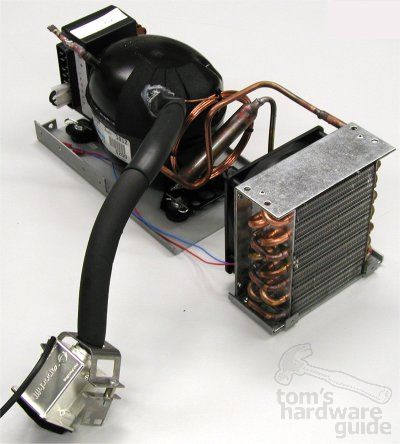
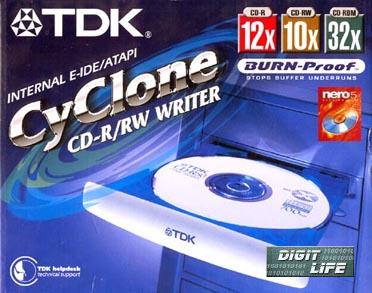
 The Goods
The Goods
 As you can probably see by perusing the table above, the Indrema L600 has the most impressive hardware and feature specifications out of the four next-generation home entertainment consoles, including Microsoft's X-Box. The only exception would be the 733Mhz processor of Microsoft's X-Box, but according to recent reports, the actual shipping frequency of the IES processor will be higher than 600Mhz, so it's possible that they could surpass Microsoft in that aspect as well. Features unique to the Indrema are the DV Linux OS, an Mp3 storage and playback system, integrated Gecko browser/email, and an enhanced digital video recorder, which offers the same features as TiVo and ReplayTV. In addition to these unique features, the Indrema L6000 also has integrated a majority of the predominant features of the three other home entertainment consoles into its package, including 10/100 Mbps Ethernet port available for DSL or Cable connections, integrated DVD playback, HDTV support, S-Video, digital surround sound, hard drive, and more.
As you can probably see by perusing the table above, the Indrema L600 has the most impressive hardware and feature specifications out of the four next-generation home entertainment consoles, including Microsoft's X-Box. The only exception would be the 733Mhz processor of Microsoft's X-Box, but according to recent reports, the actual shipping frequency of the IES processor will be higher than 600Mhz, so it's possible that they could surpass Microsoft in that aspect as well. Features unique to the Indrema are the DV Linux OS, an Mp3 storage and playback system, integrated Gecko browser/email, and an enhanced digital video recorder, which offers the same features as TiVo and ReplayTV. In addition to these unique features, the Indrema L6000 also has integrated a majority of the predominant features of the three other home entertainment consoles into its package, including 10/100 Mbps Ethernet port available for DSL or Cable connections, integrated DVD playback, HDTV support, S-Video, digital surround sound, hard drive, and more.
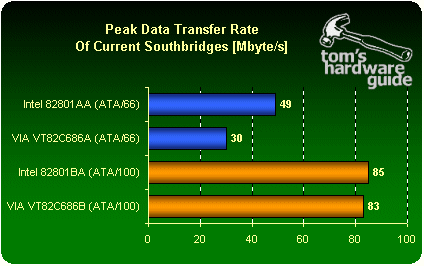
 "The Matrox Millennium G450 is a cost-effective graphics solution with broad application support," said Greg Goelz, vice president, volume products, SGI. "It allows our customers to take full advantage of the high-performance Zx10 architecture at a very attractive price."
"The Matrox Millennium G450 is a cost-effective graphics solution with broad application support," said Greg Goelz, vice president, volume products, SGI. "It allows our customers to take full advantage of the high-performance Zx10 architecture at a very attractive price."
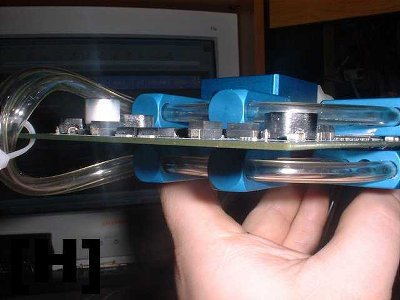
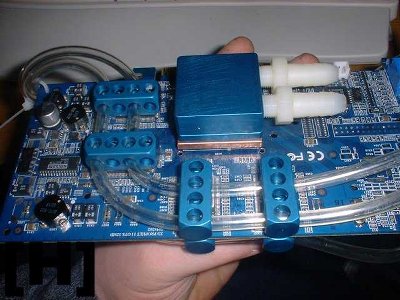
 203)
203) )
) 4)
4)
 Well, the tests showed that Seagate had made a significant step forward in the field of low-cost HDDs. Seagate seems to have successfully used its experience in the field of high-performance SCSI storage subsystems for development of well-balanced solutions for corporate PCs and home appliances. The corporate market requires reliability and high storage capacity, while the appliances market needs low noise level and low heat dissipation in the first place.
Well, the tests showed that Seagate had made a significant step forward in the field of low-cost HDDs. Seagate seems to have successfully used its experience in the field of high-performance SCSI storage subsystems for development of well-balanced solutions for corporate PCs and home appliances. The corporate market requires reliability and high storage capacity, while the appliances market needs low noise level and low heat dissipation in the first place.
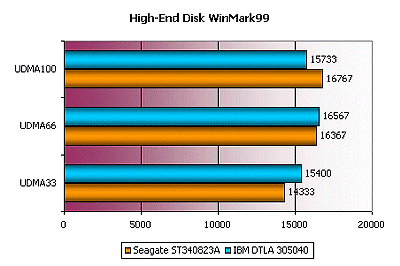
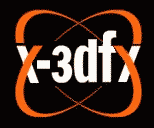 X3DFX’s priority is to create an entrepreneurial and innovative company that uses a knowledge-based infrastructure to make the dream of creating leading-edge technology a reality.
X3DFX’s priority is to create an entrepreneurial and innovative company that uses a knowledge-based infrastructure to make the dream of creating leading-edge technology a reality.

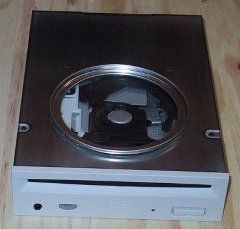
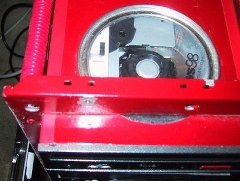


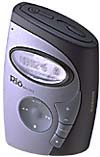 "Unlike others on the market, our family of Rio portables allows people to pick and choose the features, storage and accessories they want in a digital audio player," said Jim Cady, president of Rio. "If someone wants a digital audio player that provides a high-end experience, we believe that the Rio 800 is the choice to make."
"Unlike others on the market, our family of Rio portables allows people to pick and choose the features, storage and accessories they want in a digital audio player," said Jim Cady, president of Rio. "If someone wants a digital audio player that provides a high-end experience, we believe that the Rio 800 is the choice to make."